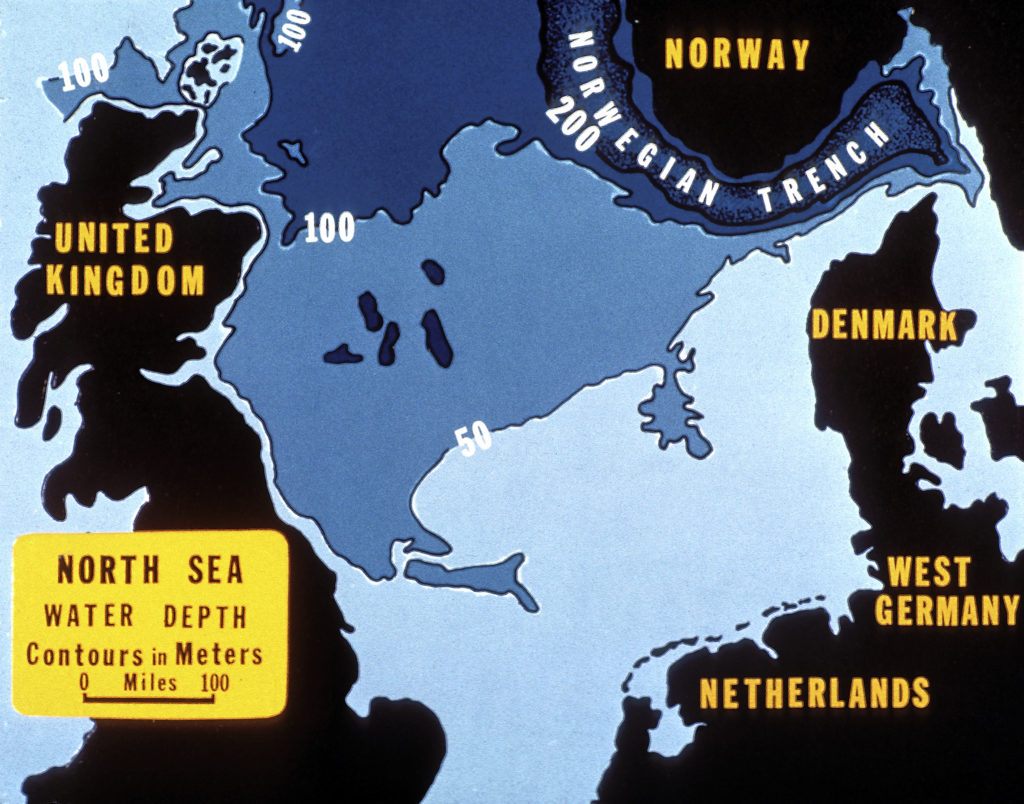Ekofisk committee reports

It was therefore charged: “to investigate whether it was technologically and economically feasible to lay pipelines or a different transport system to freight petroleum from the Phillips group’s discovery on the NCS to Norway.”
Many of the members had also sat on the 1968 Cod committee, which had been given a similar assignment for that initial North Sea discovery.
Chaired by director general Odd Gøthe at the Ministry of Industry, the committee quickly initiated studies of pipelaying techniques and routes plus possible landfall sites.
Where petroleum came ashore was an issue not only of revenues for the companies or taxes and royalties for the government, but also of the effects on industry and employment in Norway.
The Norwegian government wanted offshore oil and gas to make a direct contribution to job creation on the mainland. Security of national petroleum supplies was also an important consideration.[REMOVE]Fotnote: Hanisch, Tore Jørgen and Nærheim, Gunnar, Norsk oljehistorie. Fra vantro til overmot? volume 1, Oslo 1992: 171-176.
However, the Phillips group had previously expressed a desire to land oil and condensate at Teesside in the UK and dry gas at Emden in Germany.
Before the committee had finished its work, the government stated in White Paper 76 (1970-1971) that petroleum produced from the NCS was to be landed in Norway.
This policy document was considered by the Storting’s standing committee on industry and formed the basis for a set of principles which became known as the 10 oil commandments.
Commandment six states: “Petroleum from the NCS must as a general rule be landed in Norway, except in those cases where socio-political considerations dictate a different solution.”
In its discussions, the committee identified two problems faced when seeking to land oil and gas from Ekofisk in Norway, one being the lack of a domestic market for dry gas.
The other challenge was the Norwegian Trench, an underwater valley running up the coast of western Norway with water depths down to 372 metres. That contrasted with the pipeline route to Teesside, which had a maximum depth of 92 metres.
Not only would it be complicated to lay pipelines over the Trench with the technology of the day, but also extremely hard to maintain and repair them.
After long and fairly difficult internal discussions, the committee submitted its unanimous conclusions on 2 February 1972.
These found that landing the dry gas in Norway was not relevant because no domestic market large enough to absorb the huge Ekofisk volumes could be developed.
But the findings were less clear where the crude oil and natural gas liquids (NGLs) were concerned, and the committee had assessed two options – Teesside and Eigerøy south of Stavanger.
 Ekofisk-utvalgets innstilling, historie, 1972,
Ekofisk-utvalgets innstilling, historie, 1972,In its final recommendations, however, the committee opted for the British landfall. The most important argument in favour was the problem of crossing the Trench.
The report was submitted to industry minister Finn Lied on 11 February 1972, but the Labour government led by Trygve Bratteli was dissatisfied with its conclusions.
In its view, more time was required to review the issues and to make absolutely certain that it was impossible to lay pipelines across the Trench.
Another important consideration was the desire to secure Norwegian control over possible national resources landed in the UK so that they could be used to support jobs at home.
The government and the Phillips group reached a compromise on this issue, with the latter agreeing to pay for shipping the NGLs from Teesside to Norway as petrochemical feedstock.
This led in turn to the development of the petrochemical plants at Bamble in Telemark county south of Oslo, which meant that at least some mainland jobs were secured.
On 26 April 1973, the Storting consented to the Phillips group piping the Ekofisk gas to Emden and the crude oil/NGLs to Teesside.[REMOVE]Fotnote: Kvendseth, Stig S, Giant Discovery. A History of Ekofisk Through the First 20 Years, 1988: 58-63.
First bridge support installedGovernment consent for phase II